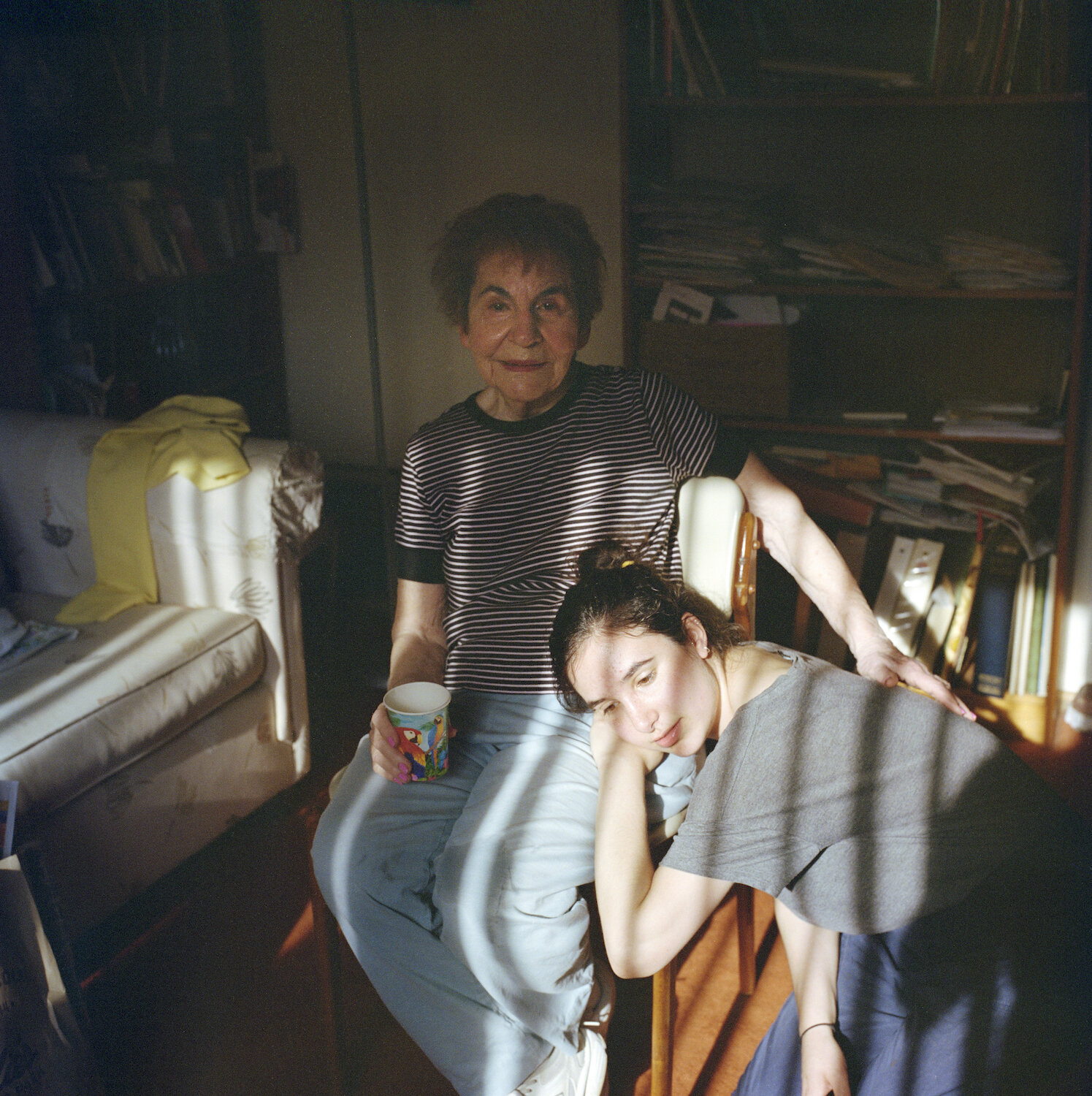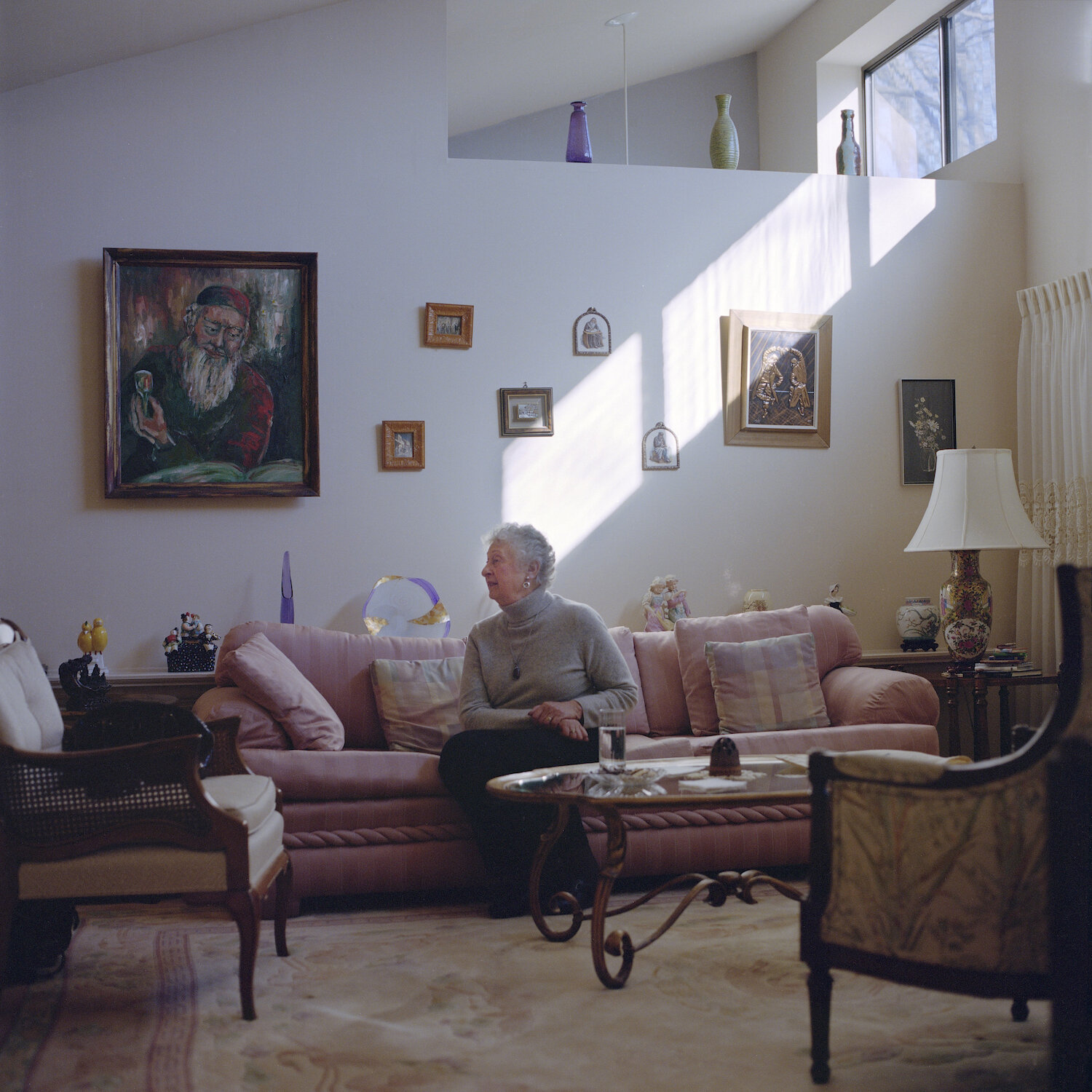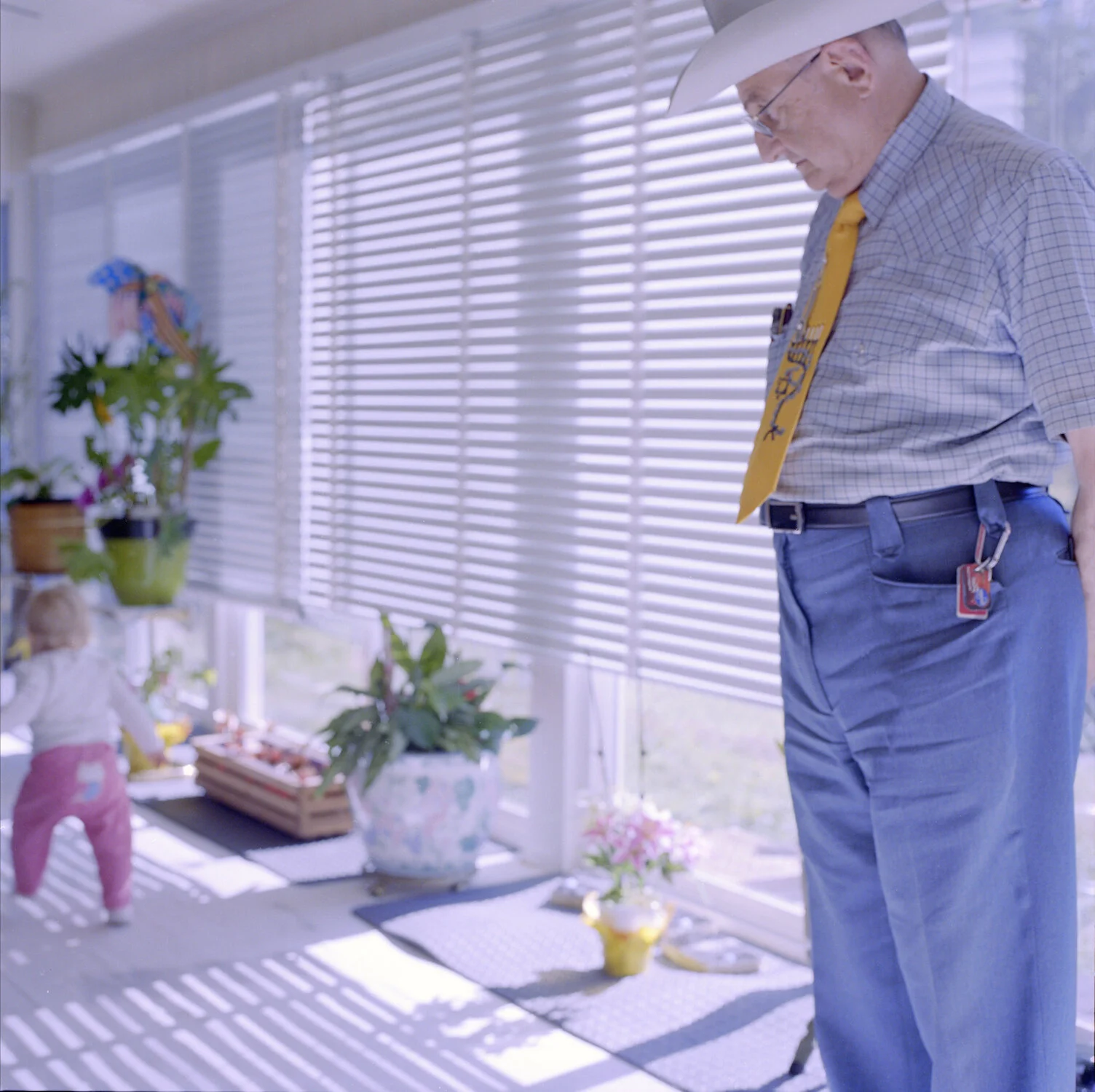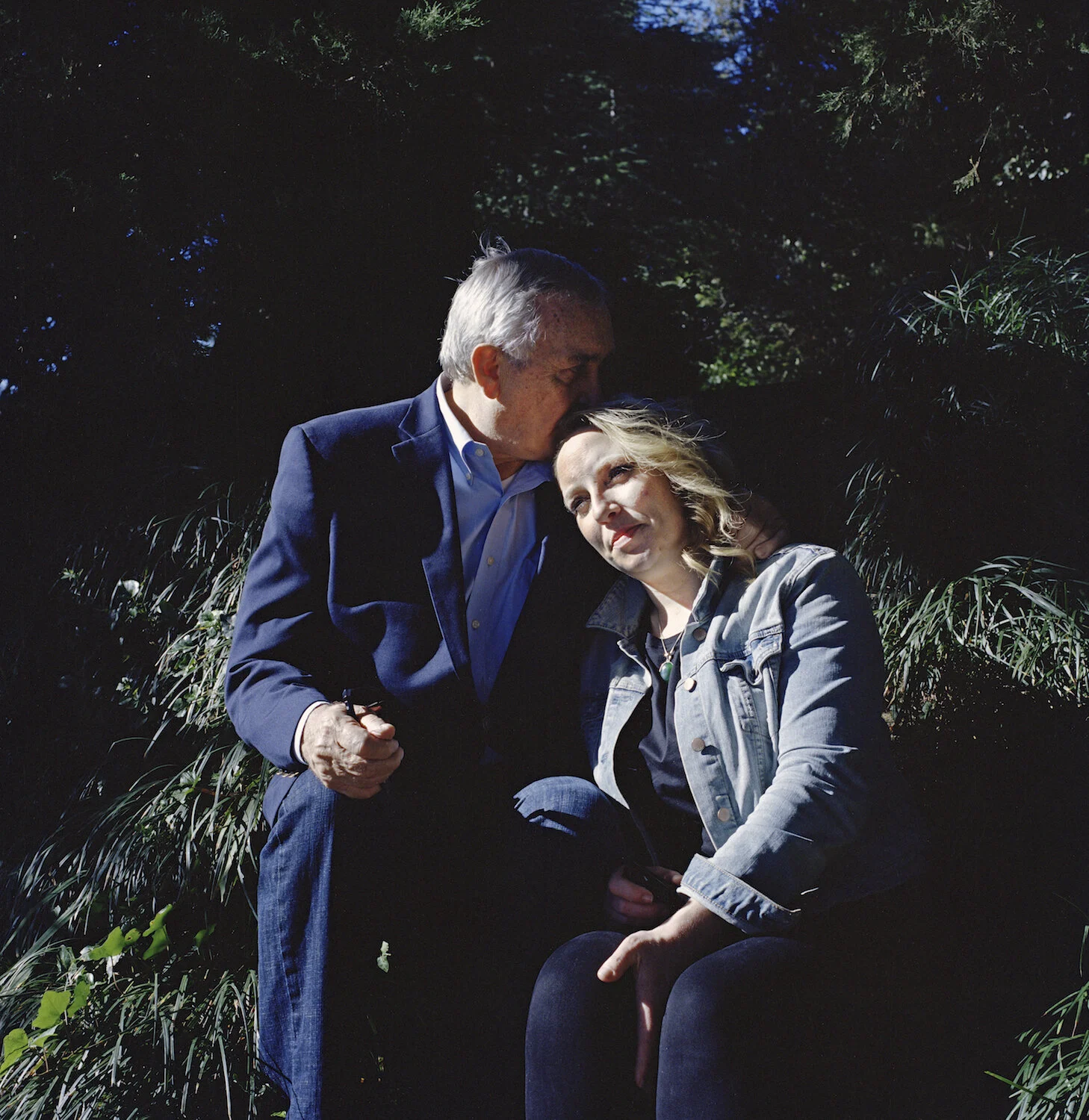© Marissa Alper
Marissa Alper’s ongoing photography series focuses on the beauty of the lives created by those who survived the Holocaust, with parallels to today’s rise of fascism in the United States.
For many Holocaust survivors and their descendants, Hitler’s atrocities are a haunting specter. Telling and recording their stories is crucial to preserving their memories and helping generations forward learn from history’s mistakes. This holds true for photographer Marissa Alper, who has been photographing her grandmother and other Holocaust survivors with their grandchildren.
Alper’s portraits, while cast in the shadow of atrocity, celebrate life and perseverance and focus on the strength and beauty of those who escaped and lived on. The survivors are often smiling, framed by warm light, presenting their grandchildren as proof of survival.
Yet Alper's photographs also sit within the increasingly grim haze of Trump’s America. For Alper, today’s political climate feels eerily reminiscent of the emergence of Fascism in Hitler’s Germany (ICE camps and forced hysterectomies, demonizing BLM protestors, systemic racism, and Trump’s refusal to accept potential election results…)
“It feels like we didn’t learn from the past,” writes Alper, “and we’re letting those who survived down.”
Alper’s series is currently on hold to protect the health and safety of the survivors. We caught up to discuss its current state and dig deeper into the story behind the work.
Jon Feinstein in conversation with Marissa Alper
© Marissa Alper
Jon Feinstein: Growing up, how much was the Holocaust part of your landscape? How did it shape your identity?
Marissa Alper: The Holocaust was not all-consuming but was still there growing up. My grandmother escaped early and was open to talking about her experience. I visited the Holocaust Museum in DC quite a few times which exposed me to the strong imagery early on. There were dark undertones to knowing about the Holocaust at a young age.
My brother and I used to play our own rendition of hide-and-seek where we’d figure out where to hide if the German police came to our door. I think I internalized that there were people in this world who hated me just because of the religion that I was born into. I’d like to think I’m a more understanding and compassionate person having grown up combating that fear and combating anti-Semitic remarks.
Feinstein: You describe the project as focusing on "the beauty of the lives of these individuals created beyond the trauma of their past."
Alper: I began this project on a trip to Berlin, Germany where I visited Magdeburg, the location my grandmother spent her early childhood and eventually fled. I was trying to get a sense of the gravity of the atrocities that occurred, but it was so hard to ground myself because there were no physical markers of what took place. The hospital she was born in was no longer there, her last home was replaced with a McDonald’s, and her grandparents’ house was turned into a bar.
I ended up making a series there where I abstracted site-specific Polaroids to try and grasp this frustration. Realizing that my grandmother was the only tangible link I had to the locations, I became inspired to create something more representational and relatable. Something that could touch a larger audience. The locations, and closure I was searching for through those locations, weren’t there but some of the people that lived in those places were. Those who survived and escaped have created lives for themselves and I’m the direct result of that. That made me want to focus on the positive where survivors are not trapped in the narrative of oppression. I believe that this is held through the lives that they have built for themselves and the future generations that carry their memories.
Two photos from Marissa Alper’s series Last Home: Places in Germany my family lived , fled from, and died.
© Marissa Alper
Feinstein: From your description of the project, you place it as a historical marker within a continuing plane of atrocity and fascism - specifically as a lesson that we sadly have not learned in the United States (ICE detention centers, systemic racism, etc..) and that you feel like our generation is "letting them down." Can you build on that?
Alper: The project started out as a historical marker in the sense that soon there will be no survivors left and I wanted to mark their presence before that happened. I wanted to commend survivors and to help solidify their stories through images with their loved ones. The project still does that but I think the context of the photos is changing as our political landscape becomes clearer. Now, their lives may be overlapping into another fascist government.
My opinion is that just the concept of ICE detention centers let alone what’s happening in them, police brutality, militia-grade enforcement of peaceful BLM protests, systemic racism towards POC and especially BIPOC that continues to be engrained in our system, Trump’s refusal to accept results of the election, directly alludes to the signs of fascism that were happening in Nazi Germany.
I am not saying that there is going to be another mass genocide, but people are still dying because of their race and even just one death is too many. There are lots of amazing people doing everything they can to fight our current system, but I think there continue to be those who are under the impression that we’ve learned from our mistakes or that complacency is an option when, right now, complacency is a stance.
© Marissa Alper
Feinstein: Do you talk about this with the survivors you photograph?
Alper: I’ve mainly discussed it with my grandmother. At the beginning of Trump’s presidency, there was definitely uneasiness coming from her and my grandfather. The Nazi rally in Charlottesville, VA was very concerning for them. Most of the survivors I talked to were adamant that their stories need to be told and remembered so that what happened to them never happens again.
Feinstein: There are a few photos where your use of natural light fells like a metaphor for hope and spirit (the two images of the woman on the couch, etc.)
Alper: Sonia (rest in peace), the woman on the chair with her arms up and the light streaming over her face, was so positive, open, and grateful to be in this world even though she had told me some of the most traumatic stories. Her husband was always sitting on a chair next to her with tattoos from Auschwitz on his arm but they would still laugh together and hold hands. I am not religious at all or very spiritual, but I find hope and spirit through the generosity, empathy, and warmness of people. Sonia, and many of the survivors I met, embodied that.
© Marissa Alper
Feinstein: You mentioned that you were initially hesitant to show these on Instagram, describing them as "Sacred," but ultimately decided to post them. What changed for you?
Alper: I have a complicated relationship with Instagram. I think it’s an amazing platform to curate your own art and push out exactly what you want people to see-it feels like my very own little gallery. But I also think that you are inundated with visuals and it can become mindless to scroll through. I felt conflicted putting these photographs on Instagram because they are so special to me and the survivors. I wanted to make sure they were given the time, respect, and carefulness that the survivors deserve.
With that being said, I have been submitting them to publications, galleries, residencies to continue the project, etc, and nothing has been sticking. I was at a point where I was doing a disservice to the photos trying to wait for the perfect opportunity that might never come. They are relevant, time-sensitive, and a good reminder to vote and take action so it felt like the right time. Posting them to Instagram allowed me to take control of my art back.
Feinstein: What do you hope viewers come away with?
Alper: I hope that these photographs honor those who survived, inspire just one person to change their prejudice against Jewish people, remind someone that the Holocaust still carries repercussions, or more generally that oppression is a reality and that small actions from those with privilege can help prevent it.
© Marissa Alper
Feinstein: I know that the project is on hold/ in limbo because of COVID. If and when you are able to resume, do you have a sense of what pieces, gaps, etc you'd need to complete it?
Alper: I would just love more images, especially more images with survivors and their family members. I also think that there’s an intimacy in some of my other work that isn’t as present in this project that I’d really like to incorporate.
Feinstein: Do you think the lockdown of this past year will change how you approach it?
Alper: I will absolutely have to alter my approach from a safety perspective, just taking more precautions. Maybe even photographing from a window. I don’t really see this virus going away anytime soon and I think the anxiety the virus has caused is going to be hard to overcome, especially when going to strangers’ houses. From a photography perspective, I’ve had time to think about what I’d do differently. I would like to approach the project with the confidence that I am being welcomed into someone’s personal space to photograph and that I don’t have to be as timid with the camera. This would include implementing multiple visits to build stronger friendships and trust.






